10 Major New Features Of Windows 10
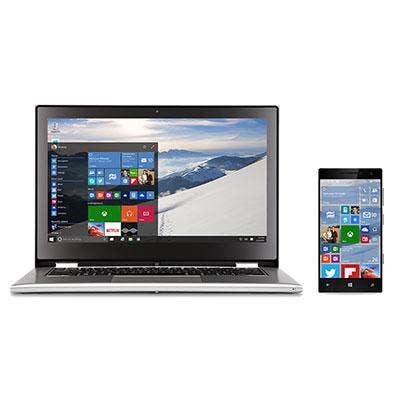
Winning
More pieces of Windows 10 were revealed at a press conference at Microsoft's Redmond, Wash.-based headquarters this week, which drew mixed reactions from resellers. Most of the new functionality reinforces the company's commitment to walking back the failures of Windows 8, some pay further homage to Apple's Mac OS X, while still others implement some actual technology or much-needed changes. Here are 10 of the major features; none are about the Hololens, but all come from the CRN Test Center's perspective.
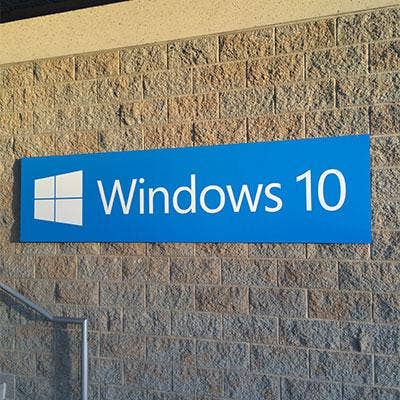
Lovin' It?
In a recent piece about Windows 10, David Pogue observed that Windows versions have historically alternated between "beloved and despised," starting with Windows 98 then Me; XP then Vista; Windows 7 and then 8. If we're to keep with that pattern, Windows 10 is due for some love. And by making it free, Microsoft is off to a pretty good start. There are relatively few restrictions, too, at least by Redmond standards. During the first year of its release sometime "later this year," Windows 10 upgrades will be free for Windows 7 (SP1), Windows 8.1 and Windows Phone 8.1 licensees. Ineligible for the free upgrade will include Windows 7 Enterprise, Windows 8/8.1 Enterprise and Windows RT/RT 8.1. Additional restrictions might apply to Active Software Assurance customers with volume licensing agreements. By contrast, Apple offers one version of Mac OS X for computers and another for mobile devices, both of which are free.
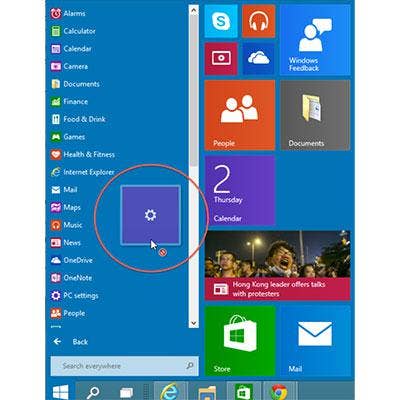
Single Point Of Control
Microsoft will finally consolidate all Windows 10 controls and system settings into a single control panel, the absence of which we've been complaining about for years. Some editions of Windows 8 employed as many as three separate places to configure system preferences, settings or controls. There should be only one; Apple has had this one right from the start.
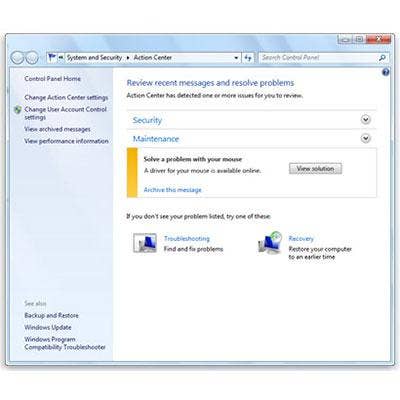
Actions Vs. Notifications
This one came right from Apple's playbook. Windows 10 will employ an Action Center, a feature identical to the Notification Center of Mac OS X; it even emerges from the right-hand side of the screen. Similar to notifications in later versions of Android, Windows 10, depending on the application, will allow replies and other actions right within the notification.
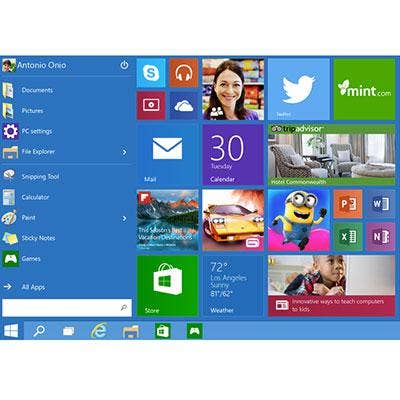
Bigger Start
Windows 10 was widely praised for returning the Start menu and gluing the app tiles of Windows 8 onto its right edge and letting the menu grow somewhat as needed. The new version removes those growth restrictions; the Start menu is now free to roam to the farthest reaches of the desktop landscape as app tiles would require. The closest thing the Mac has to the Start menu would be the Apple menu, which can launch the System Preferences panel and contains a list of recently opened apps, documents and servers. Also, Windows 10 moves the Search bar from the Start menu to the taskbar. We don't much care where it's located; we just want Windows Search to work better.
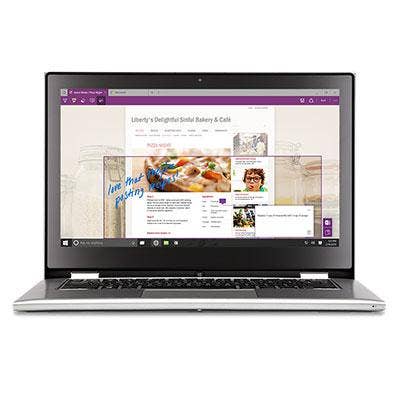
Spartan Browser
While the world is moving to more powerful and extensible browsers, Microsoft is developing a "lightweight" browser code-named Spartan, which will include annotation and offline features already available in Chrome and others via extension. But starting afresh with an all-new browser might be just the ticket to rid Microsoft of its aging and insecure browser and its legacy. Microsoft engineers in an MSDN blog post described a new rendering engine that moves away from "the versioned document modes" used in Internet Explorer, opting instead to use "the same markup language as other modern browsers." In other words, HTML5. For compatibility with legacy web sites, Spartan will load the IE11 engine when needed. The new browser also will incorporate Cortana, Microsoft's answer to Apple Siri and Google Now that's currently available only in Windows Phone.
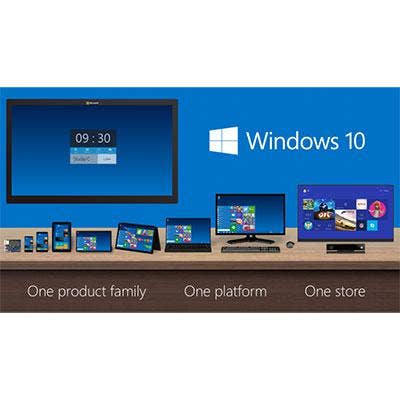
Continuum
Windows 10 will change personalities depending on what kind of device is hosting it, a feature Microsoft calls Continuum. The capability worked well when we tested it in October, displaying a prompt to switch between Desktop- and Modern-interface modes when the system detects a change. It seems like a fairly straightforward capability, and part of Apple's success over the years has been its ability to build systems that "just work." It's easier, of course, when you also control the hardware, as does Apple. But with a fancy name like Continuum, we figure there's probably more to it than simply changing modes when a keyboard and mouse are plugged in.
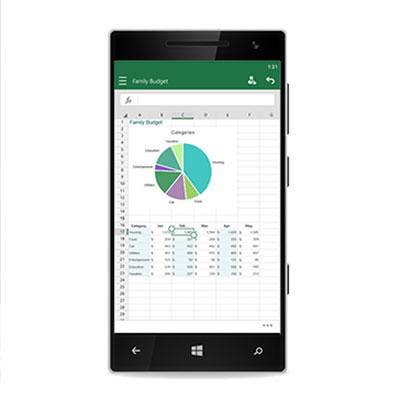
Free Office
Giving away Microsoft Office might seem like a big favor, but Microsoft is already giving it away for Android and iOS devices, so it would seem odd not to also give it to people using Windows. So Windows 10 for phones and small tablets also will include Office.
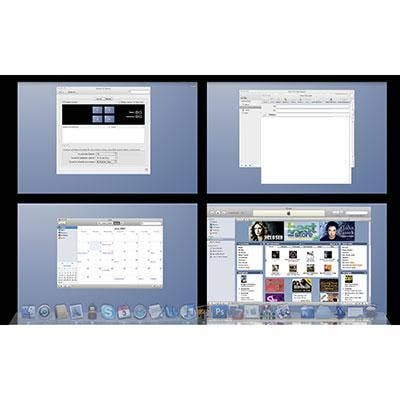
Virtual Desktops
Windows 10 will include virtual desktops, giving Windows users a means to create sets of applications and switch desktops with a keystroke. All running apps appear in the Taskbar as usual, and also can be made active by clicking. Apple has offered its Spaces virtual desktop feature (pictured) since 2007.
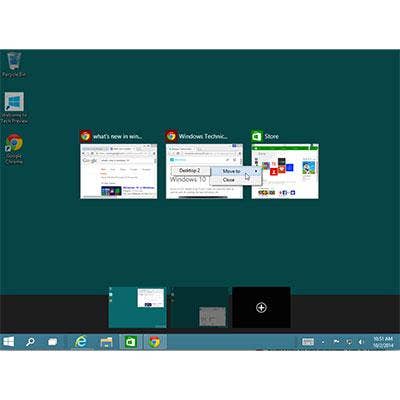
Task View
A new Task View in Windows 10 puts thumbnails of all open app windows across the middle of the screen and displays a row of active virtual desktops across the bottom. App windows are moved from one desktop to another by right-clicking on the thumbnail and selecting the destination desktop. This is roughly comparable with Apple's Mission Control.
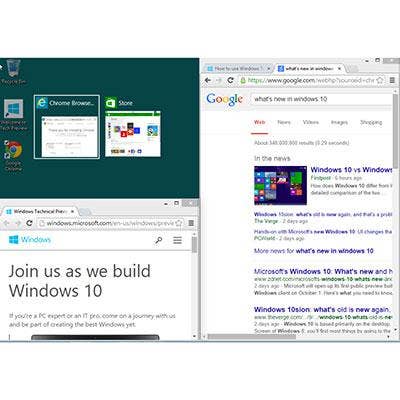
S nap Corners
Windows 10 builds on the Snap app-docking feature with a corner mode, allowing apps to automatically snap into each of the four corners of the screen just by dragging their windows into the corners. A Snap Assist feature invokes Task View at certain times for easier docking. Snapped windows also can be resized manually.
Microsoft claims that the single code base of Windows 10 will simplify development of apps intended to run on a variety of device types from embedded to the enterprise. Microsoft is expected to set a release date for Windows 10 at the Build Developer Conference 2015 in April.